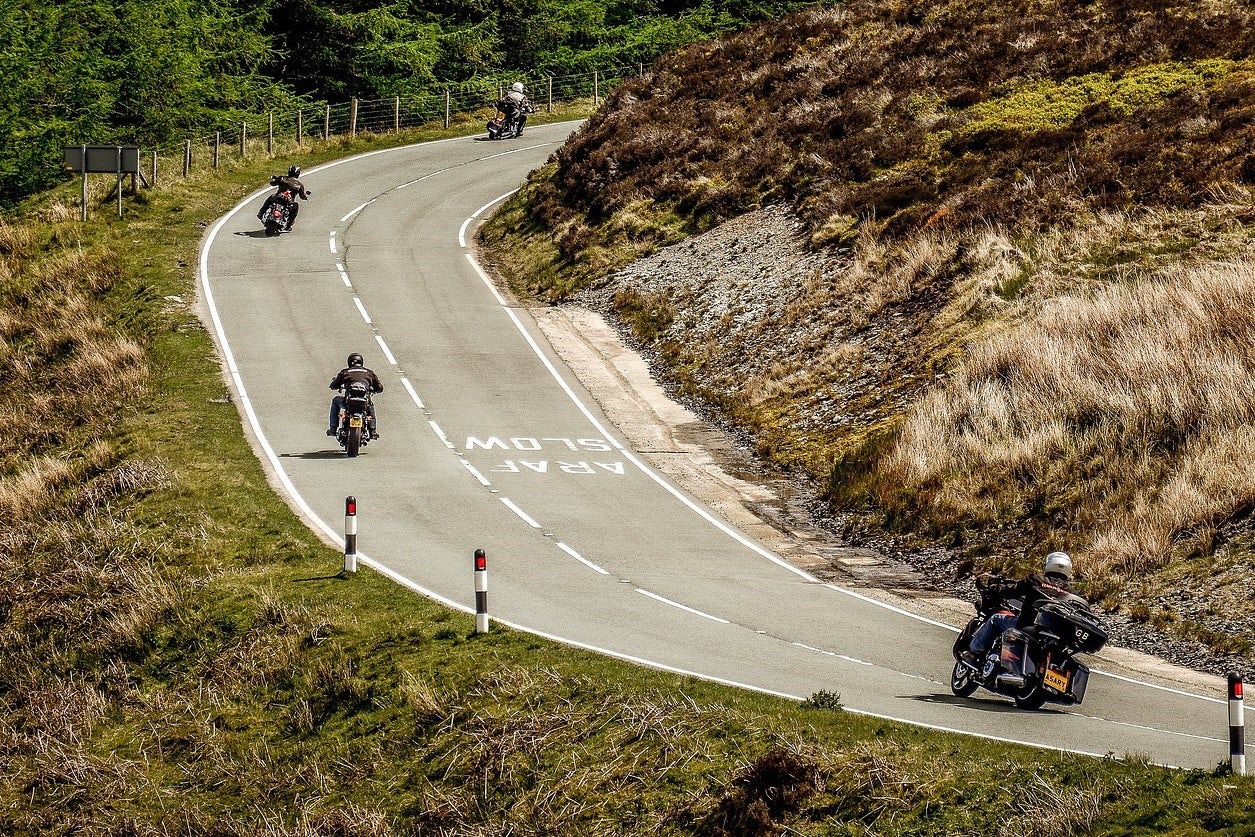
Motorcyclists and cyclists are much more likely to die in a road crash compared to car occupants. Always be on alert for riders and take extra care when they are on the road.
It is often difficult to see motorcyclists and cyclists, especially when they are coming up from behind, coming out of junctions, at roundabouts, overtaking you or filtering through traffic. Always look out for them before you emerge from a junction; they could be approaching faster than you think.
Be extra careful when turning
When turning right across a line of slow-moving or stationary traffic, look out for cyclists or motorcyclists on the inside of the traffic you are crossing. Be especially careful when turning, and when changing direction or lane. Be sure to check mirrors and blind spots carefully.
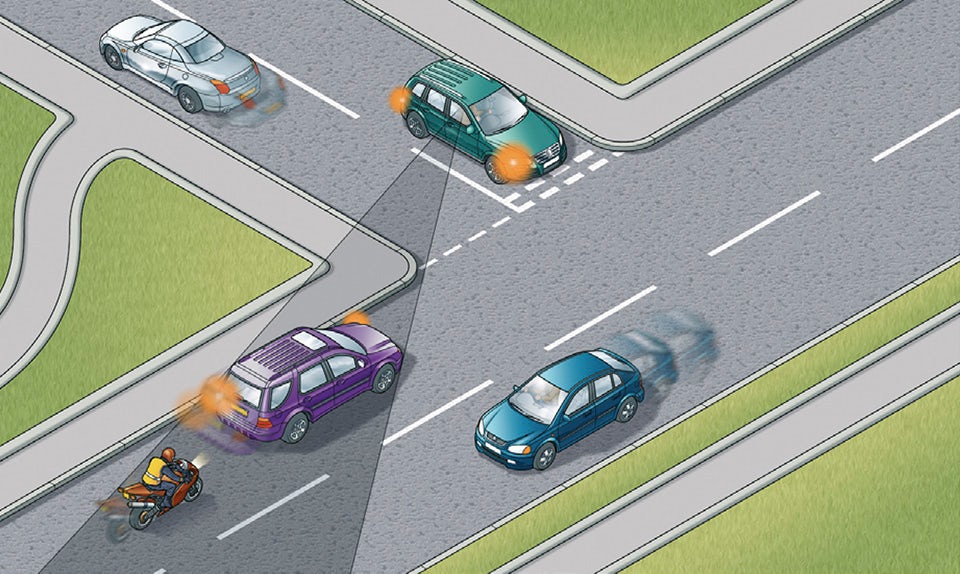
Give plenty of room
When passing motorcyclists and cyclists, give them plenty of room. If they look over their shoulder it could mean that they intend to pull out, turn right or change direction. Give them time and space to do so.
Motorcyclists and cyclists may suddenly need to avoid uneven road surfaces and obstacles such as drain covers or oily, wet or icy patches on the road. Give them plenty of room and pay particular attention to any sudden change of direction they may have to make.
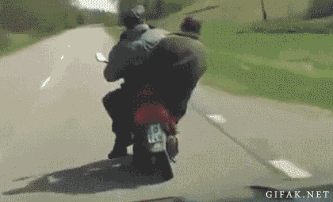
Obey road rules and apply common sense
When encountering motorcyclists and cyclists:
- Do not underestimate the speed of cyclists. They can reach up to 35 mph and can be seriously injured if a vehicle suddenly turns in front of them (e.g. at an intersection or when entering/leaving the road)
- Cyclists may need a full-width lane to ride safely (e.g. in case of gravel or rough road edges), so be prepared to slow down and allow them to travel away from the kerb
- Maintain a safety distance when passing a cyclist. Leave plenty of clearance at low speeds, and even more at high speeds
- Look in mirrors and check blind spots for riders
- Look for riders before opening car doors
- Always check side and rear mirrors as well as blind spots before merging or changing lanes. A motorcycle or bicycle can easily be hidden from view by another vehicle
- Don’t drive in the same lane or alongside a motorcycle. They need a full-width lane for safety purposes
- When overtaking a motorcycle, allow them as much space as you would for a car
- Look out for motorcycles in slow traffic as they are allowed to lane filter (i.e. move between two lines of slow-moving traffic travelling in the same direction).
Advanced stop lines
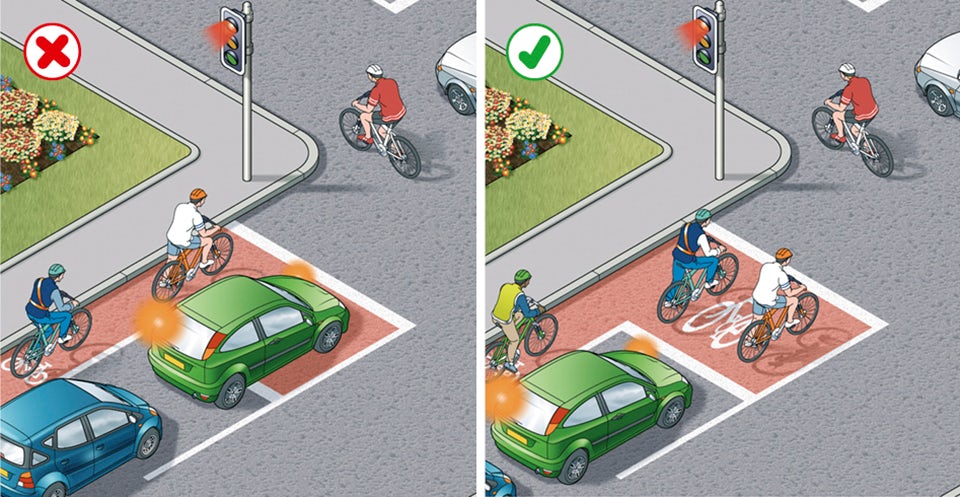
Some signal-controlled junctions have advanced stop lines to allow cycles to be positioned ahead of other traffic. Motorists, including motorcyclists, MUST stop at the first white line reached if the lights are amber or red and should avoid blocking the way or encroaching on the marked area at other times, e.g. if the junction ahead is blocked.
If your vehicle has proceeded over the first white line at the time that the signal goes red, you MUST stop at the second white line, even if your vehicle is in the marked area. Allow cyclists time and space to move off when the green signal shows.
Buses, coaches and trams
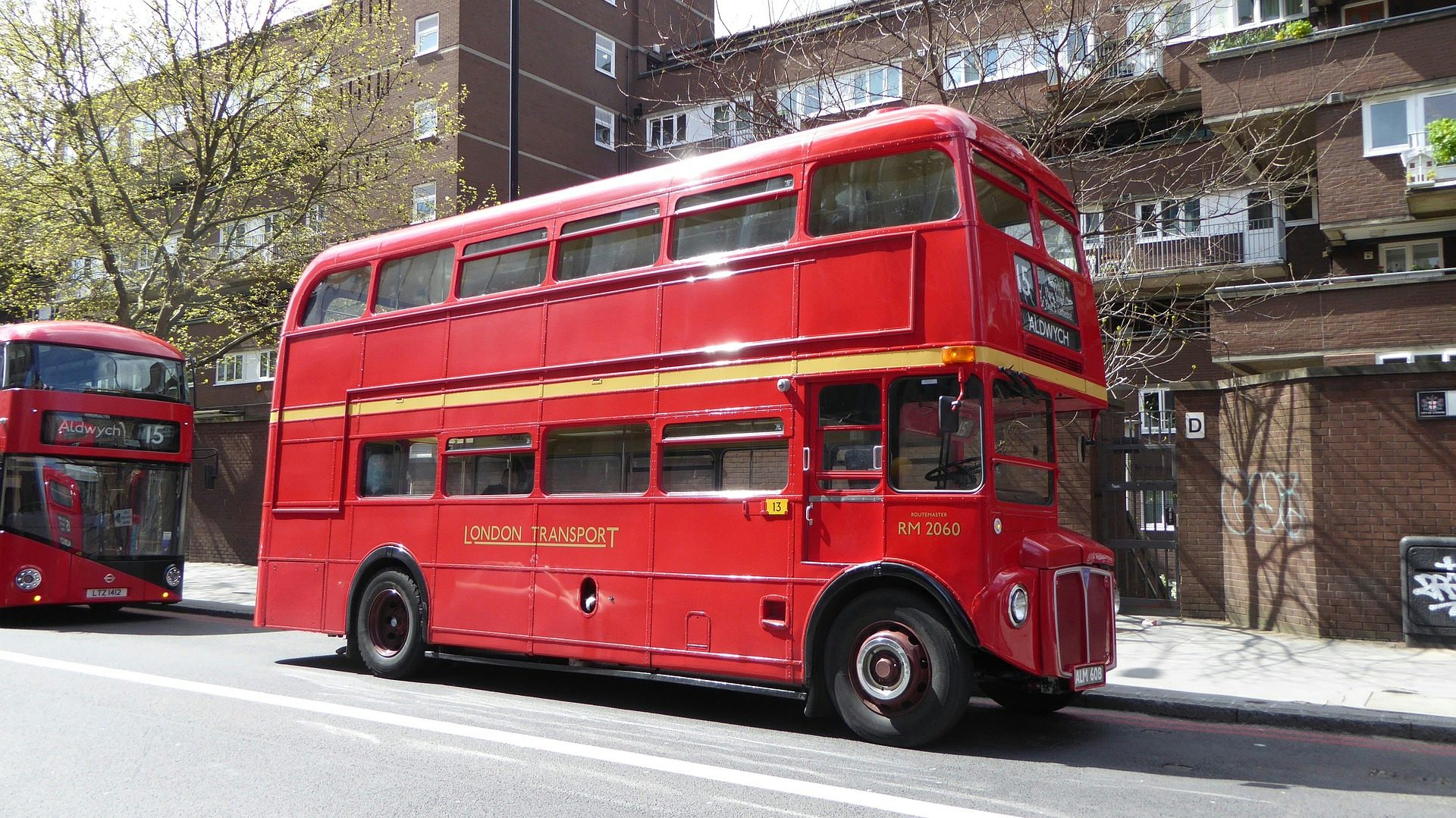
Give priority to these vehicles when you can do so safely, especially when they signal to pull away from stops. Look out for people getting off a bus or tram and crossing the road.
Passing animals and horse riders
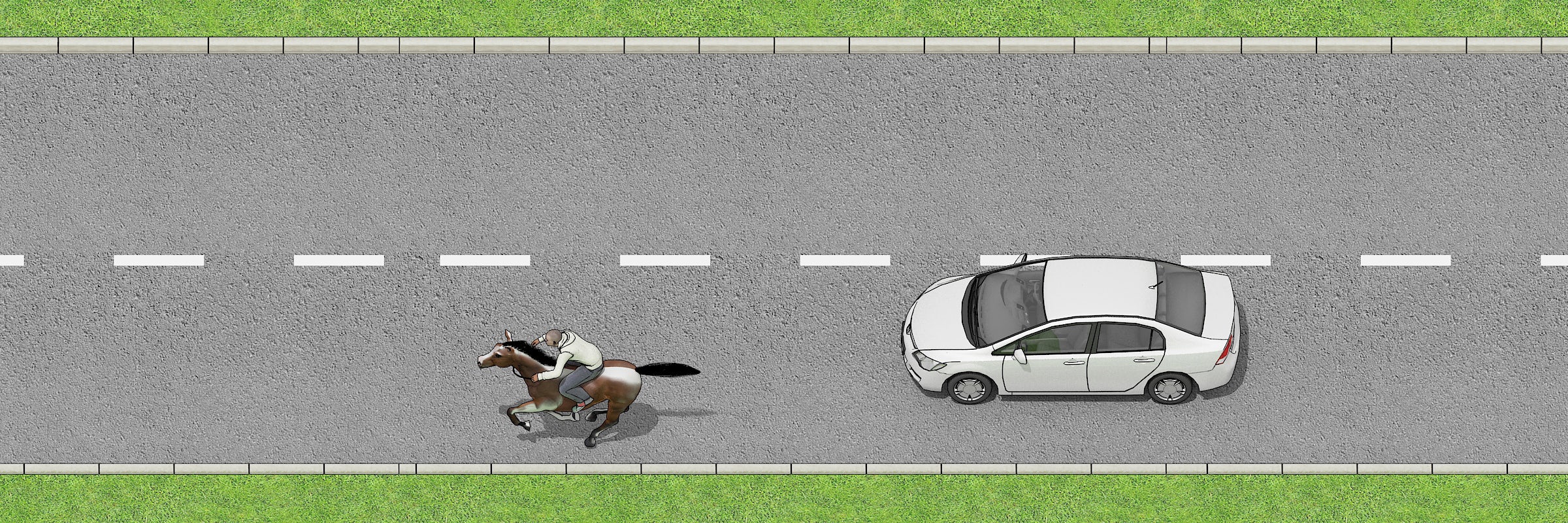
When passing animals, drive slowly. Give them plenty of room and be ready to stop. Look out for animals being led, driven or ridden on the road and take extra care.
Do not scare animals by:
- sounding your horn
- revving your engine
- accelerating rapidly once you have passed them

Keep your speed down at bends and on narrow country roads. If a road is blocked by a herd of animals, stop and switch off your engine until they have left the road.
Emergency and Incident Support vehicles
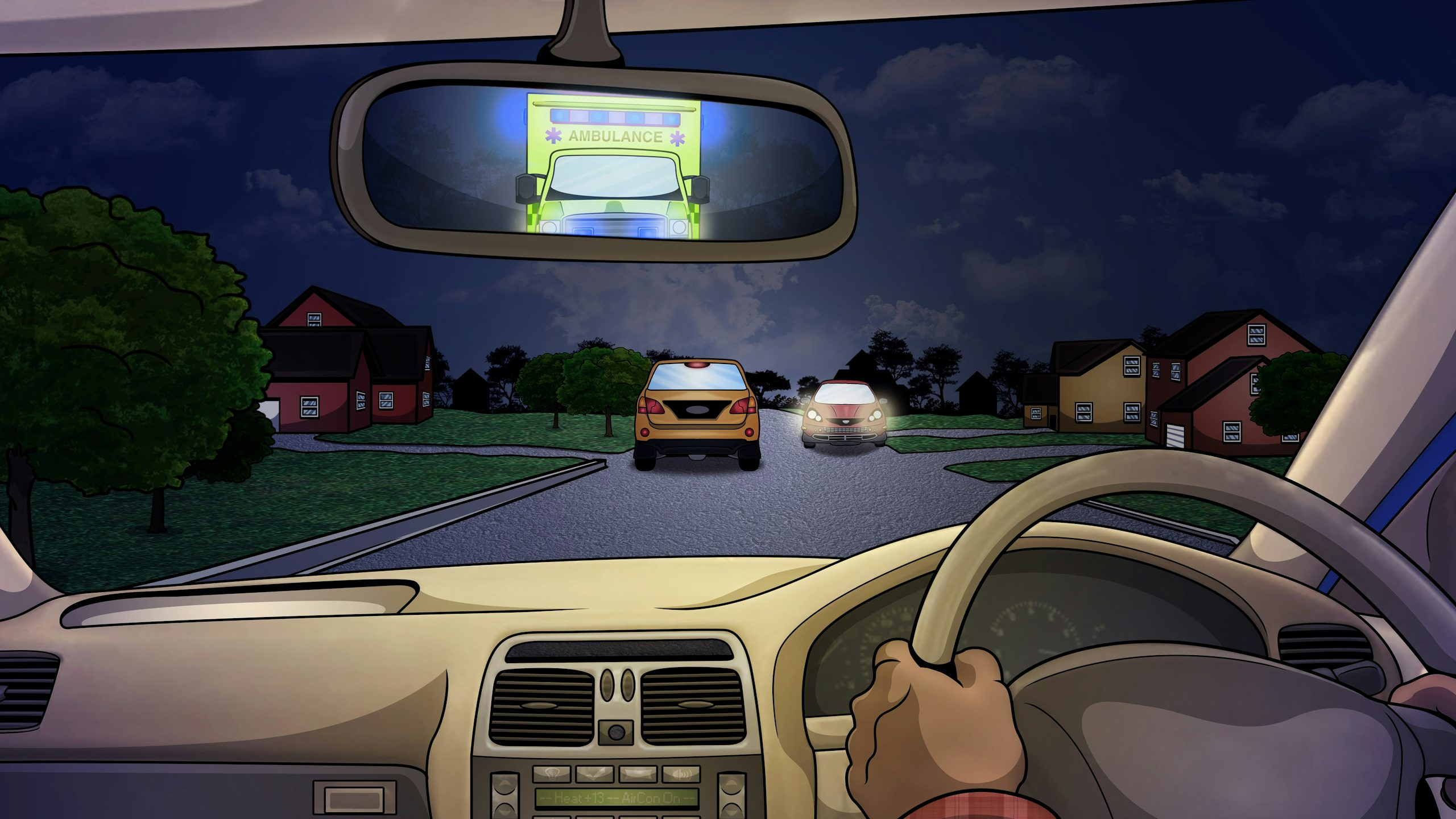
You should look and listen for ambulances, fire engines, police, doctors or other emergency vehicles using flashing blue, red or green lights and sirens or flashing headlights, or traffic officer and incident support vehicles using flashing amber lights. When one approaches do not panic.
- Consider the route of such a vehicle and take appropriate action to let it pass, while complying with all traffic signs. If necessary, pull to the side of the road and stop, but try to avoid stopping before the brow of a hill, a bend or narrow section of road.
- Do not endanger yourself, other road users or pedestrians and avoid mounting the kerb.
- Do not brake harshly on approach to a junction or roundabout, as a following vehicle may not have the same view as you.

Stationary emergency vehicles with flashing lights are likely to be tending an emergency. Slow down and give them plenty of space.
